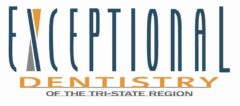Earlier this month, National Public Radio featured the story “As Our Skin Sags with Age, So Do Our Bones.” One of the most important elements in keeping facial bone definition is to keep your natural teeth!
David Hunt, a physical anthropologist at the Smithsonian’s Natural History Museum in Washington, D.C., was interviewed for the story. He oversees the roughly 30,000 human skeletons in the Smithsonian’s collection.
“When you see that many bones,” Hunt says, “You get a pretty good sense of how bone changes over time.” The skulls from the Smithsonian show a range of definition: from minimal loss in bone volume , to moderate and dramatic changes in cheek and jaw definition.
Hunt says a 20-year-old’s bone is “really pretty stuff. It’s smooth, and it’s solid, and it’s hard, and it’s dense.” But bone is not just a hunk of calcium; it’s alive and constantly, throughout life, being eaten away and rebuilt, bit by bit. In fact, every dozen years or so, each of us has a whole new skeleton. That’s good. And bad.
By middle age, the texture of the bone is rougher. Eye sockets start to sink and then the jaw recedes. You can get all the exercise and drink all the milk you want, but you’re still going to get some bone loss in your face, simply from aging.
But, according to David Hunt, does have a tip for how to slow down that facial bone droop: Hang on to your teeth.

